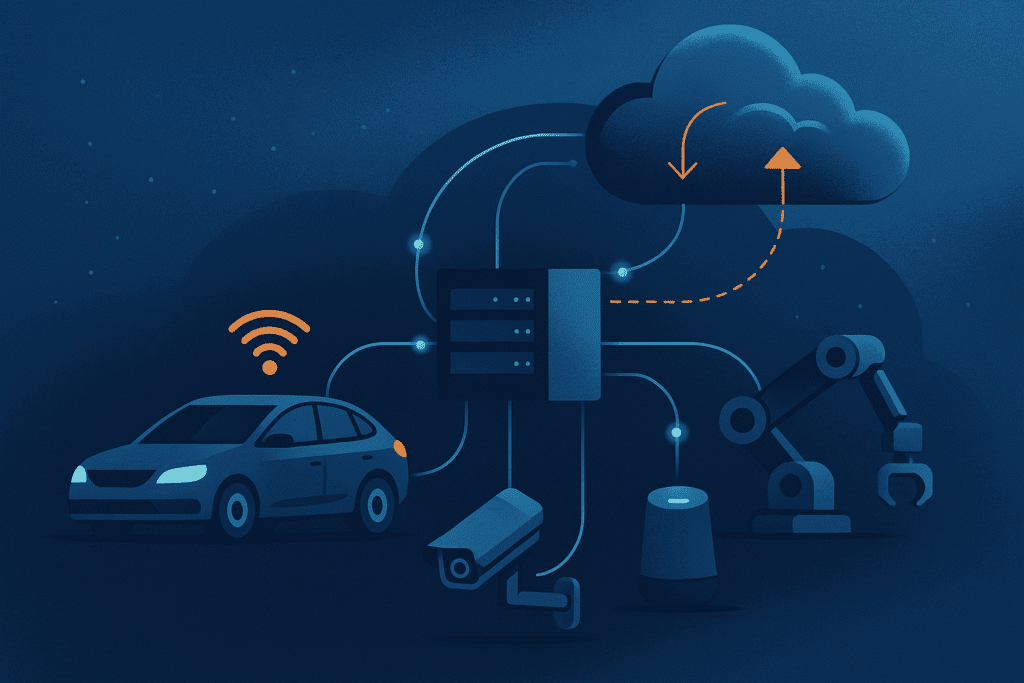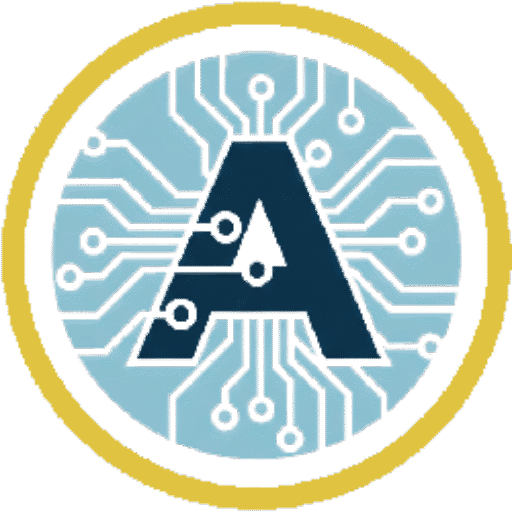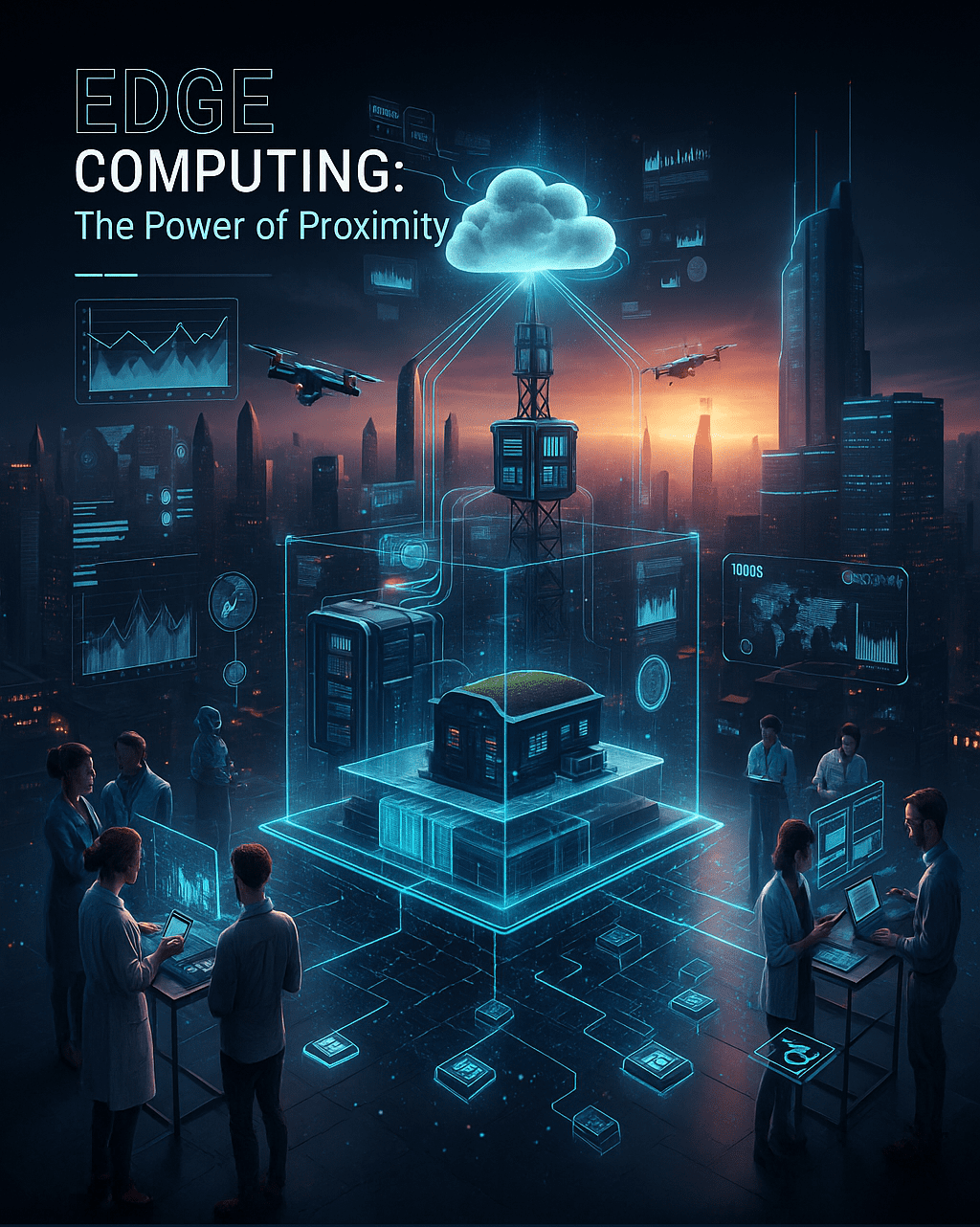Edge computing is a distributed computing paradigm that brings computation and data storage closer to the source of data generation, such as IoT devices or local networks, instead of relying solely on a centralized cloud or data center. This architecture is driven by the need for ultra-low latency, bandwidth optimization, and enhanced data privacy for real-time applications.
Architecture and Components of Edge Computing
The edge computing ecosystem is hierarchical and operates as a continuum, seamlessly integrating local processing nodes with a centralized cloud.
Core Architectural Layers
- Device Edge (Sensors & Actuators): This is the immediate point of data generation. Devices like smart cameras, industrial sensors, and wearable fitness trackers perform minimal, initial processing like data filtering, normalization, or basic aggregation. Their computational resources are often constrained by power and size, frequently employing ARM or specialized AI chips for efficiency.
- Near Edge (Edge Gateways & Nodes): This is the critical aggregation and intermediate processing layer.
- Edge Gateways: Serve as the translator and protector, aggregating data from multiple edge devices and performing protocol translation (e.g., converting industrial Modbus to MQTT), initial analytics, and acting as a network firewall/VPN terminator.
- Edge Servers/Clusters: These are industrial PCs or racked servers placed in remote facilities (factory floors, retail stores, cell towers) and are powerful enough to run containerized workloads, AI inference models (like computer vision), and sophisticated local applications. They offer local persistent storage and serve mission-critical applications that demand sub-10ms latency.
- Edge Gateways: Serve as the translator and protector, aggregating data from multiple edge devices and performing protocol translation (e.g., converting industrial Modbus to MQTT), initial analytics, and acting as a network firewall/VPN terminator.
- Edge Servers/Clusters: These are industrial PCs or racked servers placed in remote facilities (factory floors, retail stores, cell towers) and are powerful enough to run containerized workloads, AI inference models (like computer vision), and sophisticated local applications. They offer local persistent storage and serve mission-critical applications that demand sub-10ms latency.
- Far Edge (Regional Data Centers/Telco Edge): This tier, often managed by telecommunication providers or regional cloud zones, serves a larger geographic area than a single local edge cluster. It handles workloads requiring less-than-immediate but still low-latency processing, such as aggregation from multiple local edge sites and running complex, city-wide optimization algorithms.
- Central Cloud/Data Center: The top layer remains the core for model training (feeding the optimized models back to the edge), long-term data archiving, centralized orchestration and management of the entire distributed fleet, and business intelligence on aggregated, non-time-critical data.
Edge-Native Design Principles
Edge applications are increasingly designed using edge-native principles, which leverage cloud-native technologies (like containers and Kubernetes) but with a distributed mindset.
- Containerization: Applications are packaged into lightweight containers for consistent deployment across diverse, resource-constrained edge hardware.
- Decentralized Orchestration: Tools are needed to manage, update, and secure thousands of remote, often disconnected, edge nodes from a central control plane.
- Autonomy: Edge applications must be designed to function reliably even during periods of network disconnection (intermittent connectivity).
Technical Challenges and Security Models of Edge Computing
The distributed and resource-constrained nature of the edge presents significant hurdles.

Technical and Operational Challenges
| Challenge | Description | Technical Solution |
| Heterogeneity & Interoperability | The vast array of hardware (sensors, gateways, servers) from different vendors makes standardizing deployments and communication difficult. | Use of open-source frameworks (e.g., CNCF projects) and standardized messaging protocols (e.g., MQTT, OPC UA). |
| Resource Constraints | Many edge devices have limited power, compute, and memory, preventing the deployment of full operating systems or complex AI models. | Model compression/quantization for machine learning inference and the use of lightweight operating systems and hypervisors. |
| Remote Management | Thousands of nodes deployed in harsh or remote, physically unsecured locations need reliable remote patching, monitoring, and updates. | Automated zero-touch provisioning (ZTP), Over-the-Air (OTA) updates, and centralized fleet management dashboards. |
| Data Synchronization | Ensuring data consistency between the edge (local cache) and the central cloud when connectivity is unreliable. | Edge-to-Cloud data pipelines with smart filtering (only sending critical or aggregated data) and conflict resolution mechanisms. |
Advanced Security at the Edge
Security is paramount as the attack surface is significantly expanded.
- Zero Trust Architecture (ZTA): This model is critical, operating on the principle of “never trust, always verify.” Every device, user, and network flow must be authenticated and authorized, regardless of its location within the network.
- Physical Security: Unlike centralized data centers, edge nodes are often physically exposed. Solutions include tamper-proof enclosures, secure boot mechanisms (cryptographically verifying firmware and OS integrity), and hardware-based Trusted Platform Modules (TPMs) for secure key storage.
- Data Encryption: Sensitive data must be encrypted at rest (on local storage) and in transit (using TLS/SSL for communication between device-to-gateway and edge-to-cloud).
- Micro-segmentation: Network security is broken down into small, isolated zones (micro-segments) to limit the lateral movement of a threat should one part of the edge be compromised.
Edge Computing Market and Growth Trajectory
The edge computing market is experiencing rapid growth, largely driven by the simultaneous proliferation of IoT devices, 5G network rollout, and advanced AI/ML applications. It represents a fundamental shift in how we manage, process, and leverage data in the modern digital landscape. By moving computation closer to the source of data generation, it effectively overcomes the limitations of traditional centralized cloud models—chiefly high latency, bandwidth constraints, and reliability issues.
| Metric | Projection (Based on 2025/2026 Estimates) | Key Driver |
| Market Size (2025) | Between $30 billion and $564 billion (reflecting varying market definitions) | Massive investment in hardware and software across industrial sectors. |
| CAGR (2025-2035) | Projected around 28% – 33.5% | Exponential growth of 5G, IIoT (Industrial IoT), and AI adoption. |
| Dominant Region | North America (highest current market share) | Early adoption across diverse industries and significant cloud-edge investment. |
| Fastest-Growing Region | Asia Pacific (APAC) | Rapid digital transformation and enormous investments in smart cities and manufacturing. |
| Dominant Segment | Hardware (edge servers, gateways, sensors) | The foundational need to build out physical infrastructure close to data sources. |
Specific, Detailed Use Cases
Edge computing is transformative across high-stakes industries where real-time action and reliability are non-negotiable.
Smart Cities & Intelligent Transportation
| Application | Detailed Edge Functionality | Latency Requirement |
| Intelligent Traffic Management | Edge servers at intersections process video feeds from multiple cameras in real-time to analyze vehicle flow, pedestrian density, and accident detection. It dynamically adjusts traffic signal timing for optimal flow without sending massive video streams to the cloud. | <100 milliseconds (ms) |
| Autonomous Vehicles (AVs) | The vehicle itself acts as a powerful edge server. It processes Lidar, radar, and camera data instantly to perform object detection, trajectory prediction, and collision avoidance. Data is only sent to the cloud (e.g., Tesla’s fleet learning) in small, specific packages. | <10 ms (mission-critical, near-instantaneous) |
| Smart Grid Energy Optimization | Edge devices on utility poles and substations monitor energy consumption, voltage levels, and detect anomalies (e.g., impending equipment failure or illegal taps). They execute localized load balancing and instantly isolate faults to prevent large-scale power outages. | <50 ms (critical for grid stability) |
Healthcare and Remote Monitoring
| Application | Detailed Edge Functionality | Privacy Enhancement |
| In-Hospital Patient Monitoring | Edge servers placed in a hospital’s local data closet aggregate data from patient wearables, bedside monitors, and medical imaging devices. It runs AI models for predictive analytics (e.g., detecting early signs of sepsis or cardiac arrest) and sends real-time alerts to practitioners. | PHI (Protected Health Information) remains on-premises, significantly improving HIPAA/GDPR compliance. |
| Remote Surgery/Telerobotics | For future robotic surgery, ultra-low latency is required to transmit the surgeon’s movements to the robot and sensory feedback back to the surgeon. 5G-enabled edge nodes near the surgical site ensure the required QoS (Quality of Service) and minimize lag. | Minimal data transmission over public internet; most command-and-control data stays local to the mobile carrier’s edge network. |
| Wearable AI Diagnostics | Edge AI chips in wearable devices (e.g., advanced smartwatches) process raw physiological data (ECG, blood oxygen, gait analysis) locally to detect anomalies. Only a flagged, small data packet is sent to the cloud or doctor, preserving the user’s continuous raw data locally. | The raw, highly sensitive data never leaves the device, only analyzed insights are shared. |
Edging Closer to Change
The realized benefits of edge computing—faster real-time responsiveness, enhanced data privacy, and optimized network efficiency—are already proving indispensable across sectors from industrial IoT and autonomous vehicles to smart cities and healthcare.
Looking ahead, the convergence of edge computing with technologies like 5G and Artificial Intelligence will not only solidify its role as a critical infrastructure layer but also unlock the next wave of digital transformation, creating a more intelligent, resilient, and responsive world. The future of innovation is, quite literally, being built at the edge.

